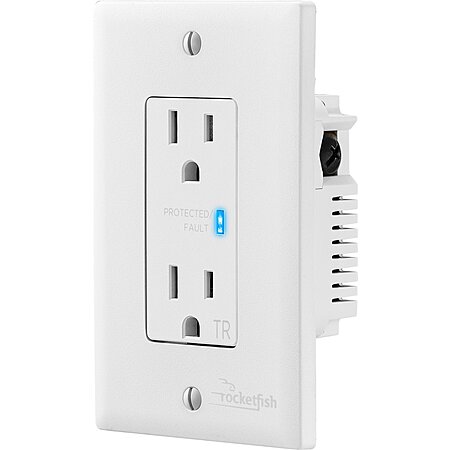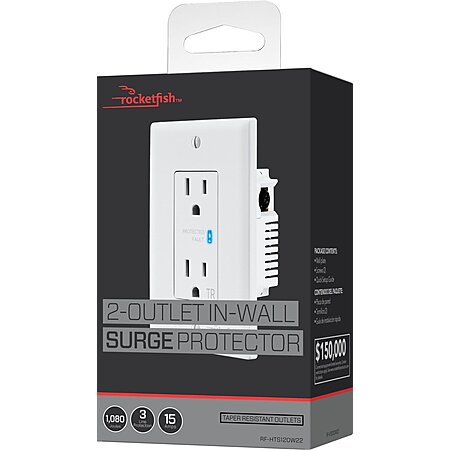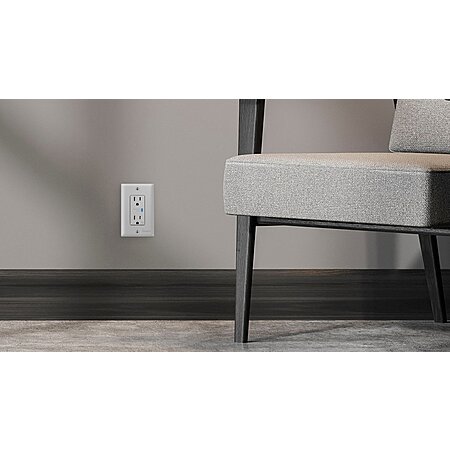Best Buy [bestbuy.com] has
Rocketfish 2-Outlet In-Wall Surge Protector (White) on sale for
$19.99.
Shipping is free for My Best Buy members (
free to join [bestbuy.com]). Otherwise, select free store pickup where available.
Product Description from Best Buy
You've already spent a lot of money on your high-tech electronics. Keep them protected from a power spike with the Rocketfish RF-HTS120W22 2-Outlet In-Wall Surge Protector. It absorbs power surges up to 1,080 joules, keeping your devices safely connected to the wall. Replacing any standard duplex wall outlet, you won't need an extra power strip to keep your devices safe with this surge protector. It includes three-line protection and a status LED light, so you know when your devices are being protected from surges that can enter all three lines. Enjoy your electronic devices knowing they are being cared for the way you'd like.





Leave a Comment
6 Comments
Sign up for a Slickdeals account to remove this ad.
The three good things are the 500V is on all three pairs (LN, LG, NG), 1080J is pretty good for the small package, and finally it's UL list.
I don't quiet trust devices with the ETL mark. I have a bias against ETL -- it's my belief that they aren't as tightly controlled as UL and as such, devices that get the ETL mark may not actually have been tested properly (or tested at all). No proof here. Just a gut feeling.
The three good things are the 500V is on all three pairs (LN, LG, NG), 1080J is pretty good for the small package, and finally it's UL list.
I don't quiet trust devices with the ETL mark. I have a bias against ETL -- it's my belief that they aren't as tightly controlled as UL and as such, devices that get the ETL mark may not actually have been tested properly (or tested at all). No proof here. Just a gut feeling.
It also has a protection indicator LED, so when that light is not lit, there's no protection, notifying the user.
Why are you talking about ETL exactly? You might confuse people, this particular device is UL listed.
IMHO, there are things to cheap out and buying an electrical device with ETL isn't one of them, especially, if it's possible to cause fire. It's all about the insurance / gamble, right? (MADE UP NUMBERS) 0.005% chance an ETL device that it might catch one fire vs 0.001% chance a UL device might catch one fire; savings buying the ETL device is $5. I'm going to spend the extra $5, but again, that's just me. Of course, it depends on the device, if it's a soldering iron or a quick charger that is only going to be used when plugged in and I'm there... then why not? But if it's a device that's plugged in all the time or long periods of time where I might not be near it to suppress/stop a disaster... nope, extra bucks. It's insurance / gamble.
;-)
IMHO, there are things to cheap out and buying an electrical device with ETL isn't one of them, especially, if it's possible to cause fire. It's all about the insurance / gamble, right? (MADE UP NUMBERS) 0.005% chance an ETL device that it might catch one fire vs 0.001% chance a UL device might catch one fire; savings buying the ETL device is $5. I'm going to spend the extra $5, but again, that's just me. Of course, it depends on the device, if it's a soldering iron or a quick charger that is only going to be used when plugged in and I'm there... then why not? But if it's a device that's plugged in all the time or long periods of time where I might not be near it to suppress/stop a disaster... nope, extra bucks. It's insurance / gamble.
;-)
But since we are on that topic, as a power supply designer whose products go through ETL and/or UL certification, I would trust both equally as an end user.
You cannot get either mark without actual testing at a lab UL or ETL have approved. Those labs are constantly audited at random.
It's CE which doesn't mean much of anything as an end user, because CE is self-declared.
I'm not sure why you have an issue with ETL though, they are interchangeable with UL. If corporations, who face far greater liability exposure than you or I do as individuals, accept ETL or UL, I don't see why you shouldn't either.
The fact that a bunch of randomly named Chinese brands have ETL marks doesn't mean ETL is handing out certifications left or right. It means those random brand names are just phantom brands, all made by the same supplier.
It's not unreasonable for a single supplier to choose one safety agency for all their products, even if those products go out with different "brand" names.
ETL is also a lot less slimy of a company to deal with, and easier to deal with. UL makes it abundantly clear they care about getting fees from vendors above all else.
Their employees at times seem to be on a mission to make a name for themselves too, with overzealous and sometimes incorrect rule enforcement.
I remember arguing with one such UL employee who incorrectly stated we had to obey spacing/creepage requirements everywhere in our design going through certification, not just across the isolation barriers or wire inputs. Meaning ~4.2mm spacing everywhere!
If we followed that, no power supply in existence would ever pass because no surface mount semiconductor (FETs) device in existence would ever meet that spacing requirement.
He then told us our design would need more in-depth analysis and certification fees would be higher (not suspicious at all). It took escalating to a supervisor and months of delays before the employee was removed from our certification.
Leave a Comment